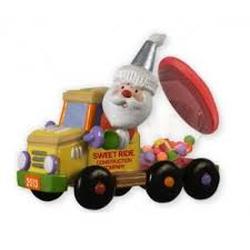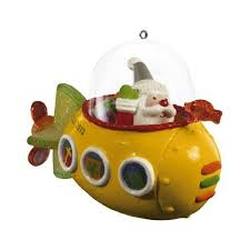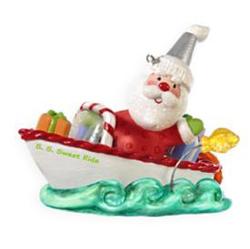Santa's Sweet Ride
This ornament series showcases Santa zooming around in different methods of transportation - all created out of sweet treats!
To me, this ornament series is all about two lines in the Our Father - "thy Kingdom come, thy will be done, on earth as it is in heaven." We often pray that the Kingdom of the Father will be built on earth, so that earth and heaven will mirror each other. Based on the words of Jesus, we know that the Kingdom is something so wonderful and precious that it is worth leaving everything else behind to get there. We know that "the blind will see, the deaf will hear and the lame will walk," both physically and spiritually. The kingdom is and will be where we can "taste and see the goodness of the Lord." It is and will be where and when heaven and earth mirror each other, and even ultimately unite. Yet, how does that happen, exactly? This ornament series points to the answer - it will take place the way all good things take place, through the movement of God, working with his people. This ornament series depicts different types of movement, a metaphor for how God moves. Sometimes our prayers are answered swiftly, as though God's will is like a bullet train. Other times, answers to prayers can take years, or even generations to be heard. The ornaments below offer ample opportunity for reflection on how God works.










